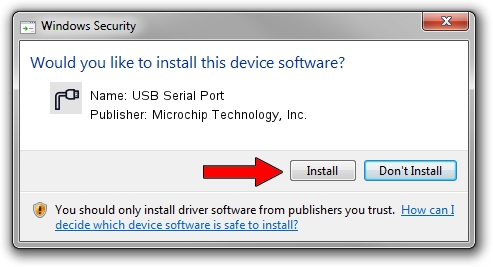If your device specifies class code 02 but a subclass code value other than 02, Usbser.sys does not load automatically. Pnp Manager tries to find a driver. If a suitable driver is not found, the device might not have a driver loaded. In this case, you might have to load your own driver or write an INF that references another in-box driver. Download and install the Microchip driver for Windows. (Not required for Windows 10.) Connect the micro USB cable from your Windows computer to the micro USB console port on the firewall. Open the Windows Control Panel and select Devices and Printers. Download midi drivers for free. Internet & Network tools downloads - MIDI Yoke by JOConnell and many more programs are available for instant and free download.

Download Microchip Port Devices Drivers
-->For most devices, the Ports device setup class and the Serial function driver provide the functionality required to operate serial ports and COM ports. To install serial ports and COM ports using these system-supplied components, do the following:
Provide an INF file that specifies the Ports device setup class and the Serial function driver as the service for the port.
To configure a serial port as COM port, comply with the requirements that are defined in Configuration of COM Ports.
For more information about installing serial ports and COM ports using the Ports device setup class and the Serial function driver, see the following topics:
If you do a custom installation of a COM port, you must comply with the COM port requirements that are defined in Configuration of COM Ports.
Download Microchip Port Devices Driver Updater
Before you begin
Driver updates for Windows 10, along with many devices, such as network adapters, monitors, printers, and video cards, are automatically downloaded and installed through Windows Update. You probably already have the most recent drivers, but if you'd like to manually update or reinstall a driver, here's how:
Update the device driver
In the search box on the taskbar, enter device manager, then select Device Manager.
Select a category to see names of devices, then right-click (or press and hold) the one you’d like to update.
Select Search automatically for updated driver software.
Select Update Driver.
If Windows doesn't find a new driver, you can try looking for one on the device manufacturer's website and follow their instructions.
Reinstall the device driver
In the search box on the taskbar, enter device manager, then select Device Manager.
Right-click (or press and hold) the name of the device, and select Uninstall.
Restart your PC.
Windows will attempt to reinstall the driver.
More help
If you can't see the desktop and instead see a blue, black, or blank screen, see Troubleshoot blue screen errors or Troubleshoot black or blank screen errors.

Comments are closed.